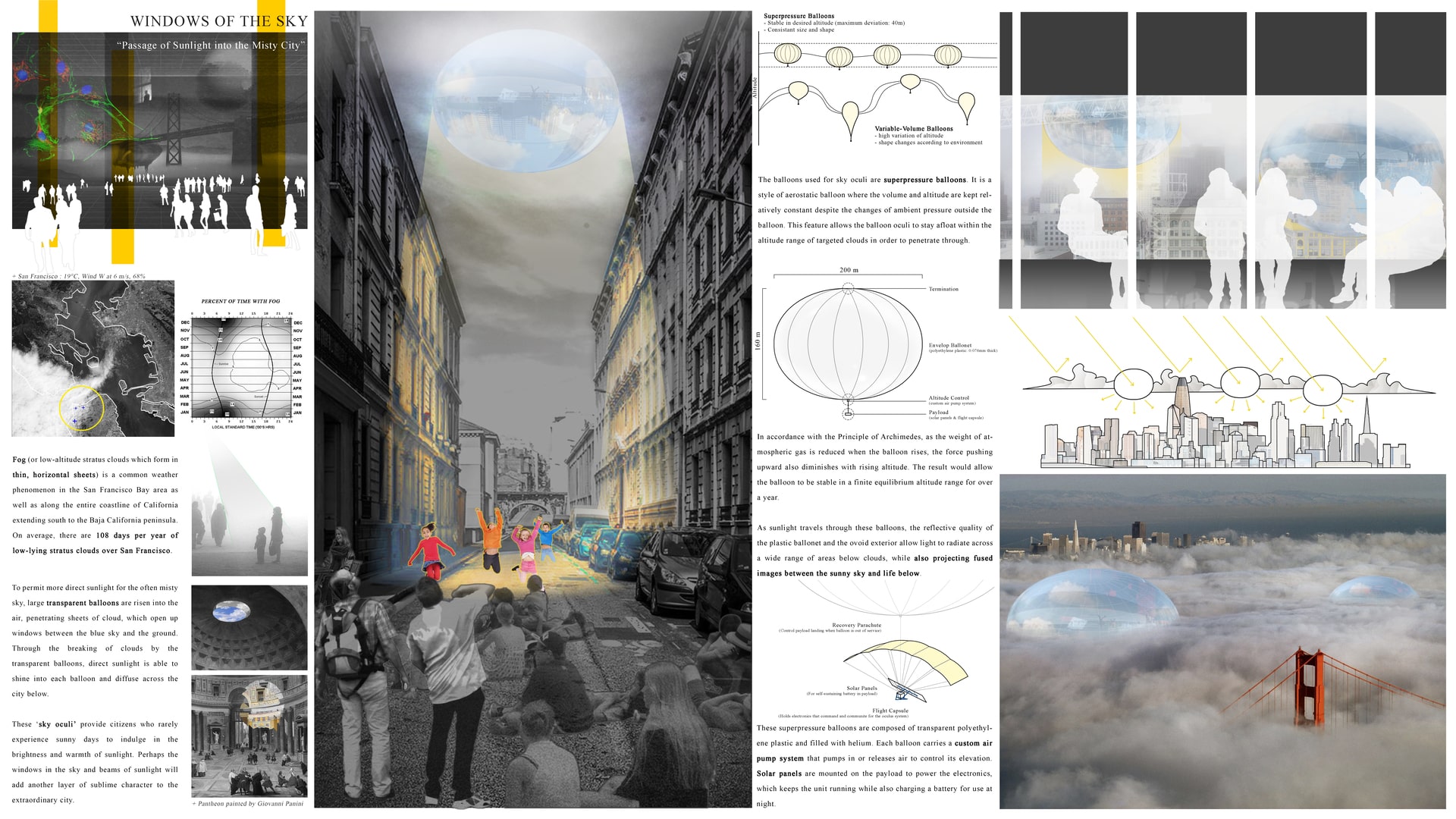Project Description
+Title _"Windows of the sky" : Passage of Sunlight into the Misty City +Site: San Francisco (19°C, Wind W at 6 m/s, 68%. average. ) +Background information : Fog (or low-altitude stratus clouds which form in thin, horizontal sheets) is a common weather phenomenon in the San Francisco Bay area as well as along the entire coastline of California extending south to the Baja California peninsula. On average, there are 108 days per year of low-lying stratus clouds over San Francisco. +Concept : To permit more direct sunlight for the often misty sky, large transparent balloons are risen into the air, penetrating sheets of cloud, which open up windows between the blue sky and the ground. Through the breaking of clouds by the transparent balloons, direct sunlight is able to shine into each balloon and diffuse across the city below. These ‘sky oculi’ provide citizens who rarely experience sunny days to indulge in the brightness and warmth of sunlight. Perhaps the windows in the sky and beams of sunlight will add another layer of sublime character to the extraordinary city. +Technology & Equipment : The balloons used for sky oculi are superpressure balloons. It is a style of aerostatic balloon where the volume and altitude are kept relatively constant despite the changes of ambient pressure outside the balloon. This feature allows the balloon oculi to stay afloat within the altitude range of targeted clouds in order to penetrate through. As sunlight travels through these balloons, the reflective quality of the plastic ballonet and the ovoid exterior allow light to radiate across a wide range of areas below clouds, while also projecting fused images between the sunny sky and life below. In accordance with the Principle of Archimedes, as the weight of atmospheric gas is reduced when the balloon rises, the force pushing upward also diminishes with rising altitude. The result would allow the balloon to be stable in a finite equilibrium altitude range for over a year. These superpressure balloons are composed of transparent polyethylene plastic and filled with helium. Each balloon carries a custom air pump system that pumps in or releases air to control its elevation. Solar panels are mounted on the payload to power the electronics, which keeps the unit running while also charging a battery for use at night.
